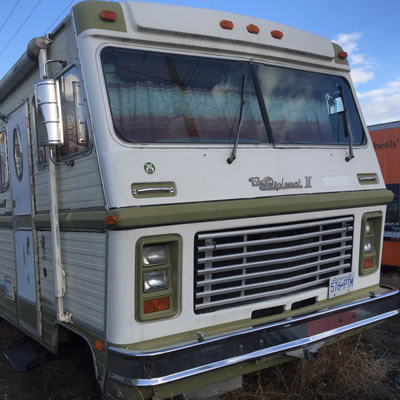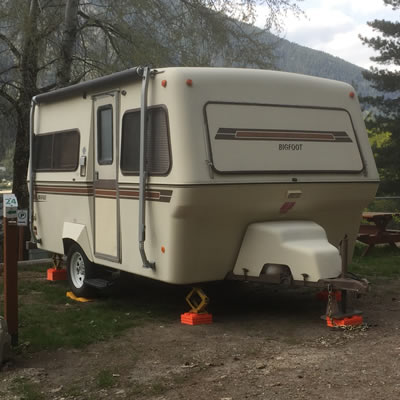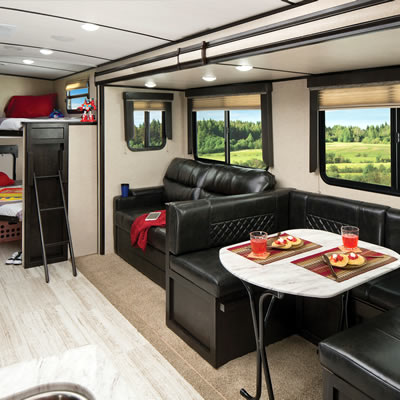Vintage RV: 1979 Triple E Micmac III Dodge motorhome gives this couple the “Freedom to Explore”
“Freedom to Explore” is the slogan for Triple E Recreational Vehicles and it pretty much sums up how I feel about our home away from home.
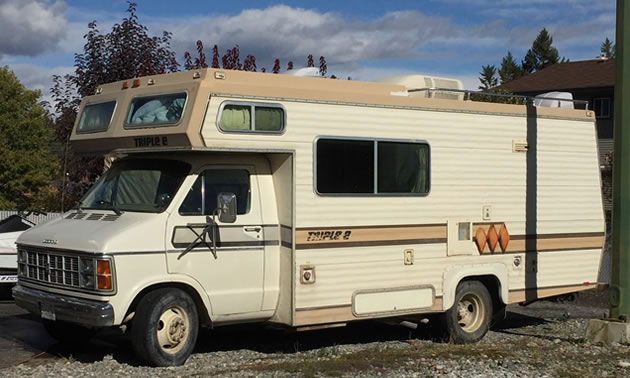
When my husband asked (read: announced) how I felt about buying what would be considered a vintage motorhome, I had only two stipulations: everything had to work and it needed a hitch (I’ll explain why later).
Done. A few hours on Kijiji and he had found the perfect one: a 1979 Triple E Micmac III, on a Dodge chassis to boot. Much to my surprise, I fell in love with it instantly. The fuel mileage, not so much.
With a 440 V8, this oldy but goody gets thirsty real fast, especially at highway speeds. It’s a good thing then that our adventures take us off-road more than on. Living in the Kootenay Rockies, we have access to some of the prettiest terrain in B.C.
“Freedom to Explore” is the slogan for Triple E Recreational Vehicles and it pretty much sums up how I feel about our home away from home. In just a few months, we’ve spent more time on dirt roads, searching for the perfect backcountry camping spots, than most RVers would in their entire lives. We’re active people who love the outdoors.
Having either vacationed or lived full-time in travel trailers, fifth wheels and truck campers, we feel that a motorhome is the ideal way to travel. For starters, there’s no hooking, unhooking and backing up a trailer, which as we all know, can lead to some tense moments in the marital union. It’s just start and go. Then park and camp.
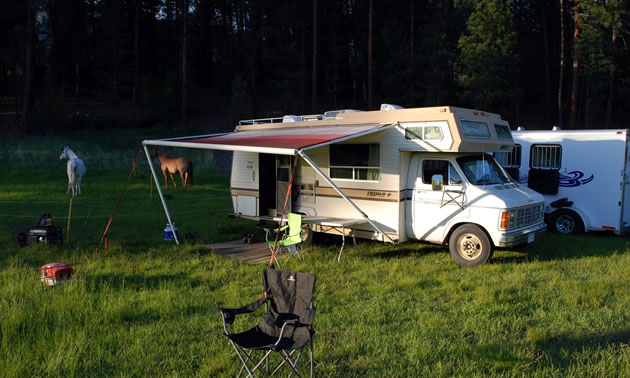
Truck campers are great for boondocking and our backcountry-type camping; however, there is the loading and unloading to factor in. Newer campers are lighter and easier to handle, but they still tie up your truck. Also, helping a senior dog, who insists on being everywhere his owners’ are, in and out of a camper is not so much fun. (Plan for the day: Lift dog up, lift dog down . . . )
Of course, there are some cons to owning a motorhome: insurance, more tires to buy and another engine to maintain. A spare vehicle is necessary if you’re planning to stay in one place for a while. Depending on your lifestyle, you may also need room to haul toys. Some RV manufacturers, such as Thor Motor Coach, design Class A toy hauler motorhomes but these are luxury vehicles that usually come with a hefty price tag.
Speaking of luxury, I have been informed that our 1979 Triple E Micmac III Dodge motorhome was the high-end model of its time, as evidenced by the onboard air conditioner. The ahooga horn on the other hand, well, that’s an added feature that complements its character.
Share your classic RV restorations, or tell us your favourite story about a cool vintage unit you've encountered by filling out our Classic Vintage RV form.





